Text
The Ethno-Cultural Heritage of Modern France
This map made by European Origins aims to showcase the diverse origin of the modern French nation.
Although France takes its name from the Germanic Franks, the area now occupied by France was originally predominantly a Celtic region, as is attested most prominently in Caesar’s Commentaries on the Gallic Wars.
The inhabitants of most of what is now France were referred to as Gauls, which was…
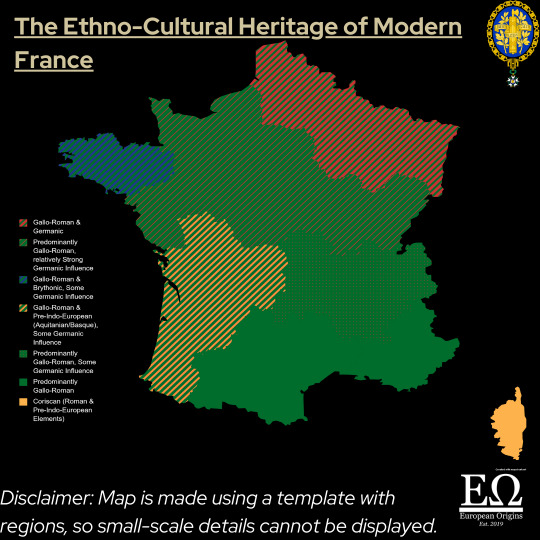
View On WordPress
0 notes
Text
Study suggests Steppe Origin of Etruscans
A study has just been published regarding the genetic origins of the ancient Etruscans. They were a people of Antiquity who inhabited the region north of Latium, where Rome was founded by a Latin tribe. Before the rise of Rome, they were arguably the most powerful, most influential, and culturally and technologically advanced people on the Italian peninsula, perhaps only rivaled by the Greeks in…

View On WordPress
3 notes
·
View notes
Text
The Ethnogenesis of the Alemanni
Bachelor’s Thesis in the Course Cultural Studies at the FernUniversität in Hagen
Grade: 1.0
By Marcel Biehringer (Translated from German by AI, proofread by the author)
1 Introduction
Questions about one’s own identity are an essential part of being human. How an individual defines himself or herself also depends on the social group to which he or she feels that he or she belongs (cf. Brather…

View On WordPress
#Alamanni#Alemannen#Alemanni#Ancient History#Antiquity#german history#History#Migration Period#Roman Empire#Roman History#Suebi
3 notes
·
View notes
Text
Study suggests Indo-European Language Family is older than previously thought.
https://www.mpg.de/20664457/0725-evan-ursprung-der-indogermanischen-sprachen-150495-x
The researchers of the Max-Panck-Institute of Evolutionary Anthropology in Leipzig, Germany, state that the Indo-European language family is several thousand years older than previously assumed (8100 years before present/ 6100 BC). It also aims to combine two rivaling theories regarding the original homeland of…
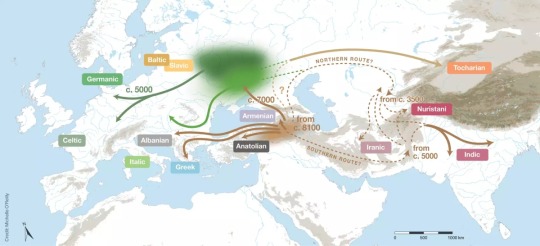
View On WordPress
2 notes
·
View notes
Text
Die Ethnogenese der Alemannen
Bachelorarbeit im Fachschwerpunkt Geschichte im
Bachelorstudiengang Kulturwissenschaften
Fernuniversität in Hagen
vorgelegt von:
Marcel Biehringer
Endnote: 1.0
1 Einleitung
Fragen nach der eigenen Identität sind ein essentieller Bestandteil des Mensch-Seins. Wie sich der Einzelne definiert hängt auch von der sozialen Gruppe ab, zu welcher man sich zugehörig fühlt (vgl. Brather 2000, S.…

View On WordPress
#Alamannen#Alemannen#Antike#Ethnogenese#Geschichte#Migration#Mittelalter#Schwaben#Sueben#Völkerwanderung#Völkerwanderungszeit
1 note
·
View note
Text
Germany, the Germanic Tribes and their Origins
1 Introduction
Shrouded within the uncertainty of Europe’s distant past are many mysteries. Whilst we are relatively well informed about the Mediterranean with its mighty empires we know comparatively little about the heartland and the fringes of the European continent. It wasn’t until the days of Julius Caesar that a new player stepped up onto the stage of European and – by extension to the…

View On WordPress
3 notes
·
View notes
Text
European Origins Discord & Patreon
Hello again!
Another small update.
Upon request I have created a European Origins Discord Server, where you can discuss history with like-minded individuals (and myself).
You can join the Discord here.
Furthermore there is now a European Origins Patreon where you can donate to the project, if you like. At the moment two different tiers are available, one of which simply supports European…
View On WordPress
0 notes
Text
Short "Documentary" about the Indo-European Language Family
Hello!
It’s been a while since the last post on the website but I’m happy to inform you that I’ve been busy working on other platforms.
First of all I’d like to introduce yourself to European Origins on Instagram:
We are close to 18,000 followers and the page has been growing rapidly.
Secondly, I’ve started dabbling in the creation of videos for said Instagram, as well as other platforms.…
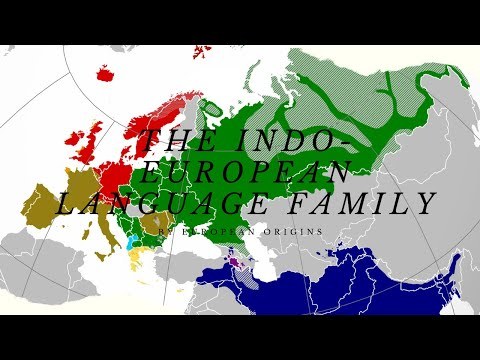
View On WordPress
0 notes
Text
Continental West Germanic Dialect Continuum
The Continental West Germanic Dialect Continuum. Today Dutch and German are thought of as distinct languages and justly so. But in actuality there was a fluent transition between what is considered Dutch and what is considered German today for most of history and in some places in the border area this still holds true today. In a sense the Northern German dialects and Dutch are more closely…
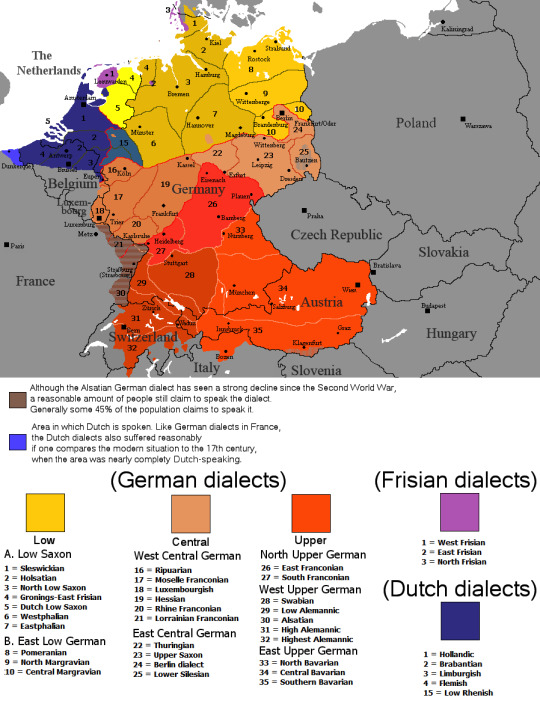
View On WordPress
4 notes
·
View notes
Text
A Neanderthal in Suite and Tie
By the Neanderthal Museum, Germany
What if Neanderthals hadn’t become extinct? This is a question the curators of a Museum in Germany must have asked themselves when they created this exhibit: A Neanderthal in a suit and tie. As many of you may know, research in Archaeogenetics has relatively recently revealed that all human beings north of the Sahara Desert carry a few percent of Neanderthal…

View On WordPress
1 note
·
View note
Text
Y-DNA Haplogroups in the German Empire
By Rober Gabel
The Haplogroup distribution across the German Empire prior to WW1 according to FTDNA and Robert Gabel.Haplogroup I is the oldest of them and probably resembles remnants of Hunter-Gatherer lineages whilst R1b and R1a are connected to Celto-Germanic and Slavic peoples.

View On WordPress
4 notes
·
View notes
Text
The Etruscans
By NormanEinstein – Based on a map from The National Geographic Magazine Vol.173 No.6 June 1988., CC BY-SA 3.0, https://commons.wikimedia.org/w/index.php?curid=241378
The maximum expansion of the Etruscans.
The Etruscans were one of the many historic peoples inhabiting the Italian Peninsula before the Rise of Rome and influencing the Empire from within after their subjugation. It is thought…
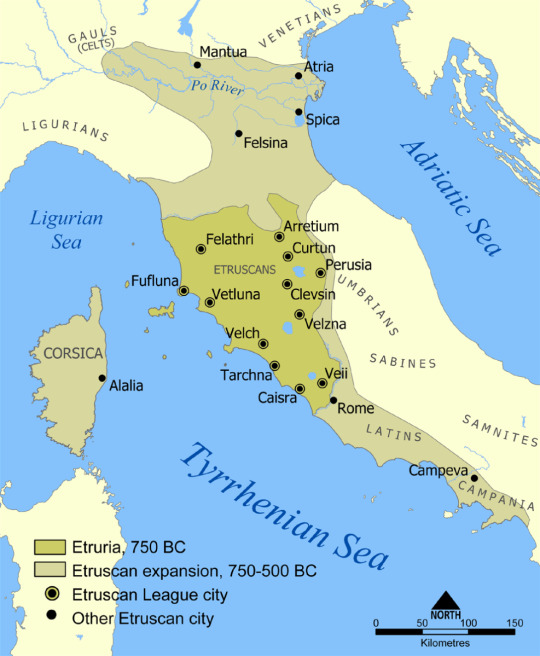
View On WordPress
0 notes
Text
The Migration of the Cimbri and Teutons
The Migration of the Cimbri and Teutons
By TcfkaPanairjdde – Versione italiana di Image:Cimbrians and Teutons.png, CC BY-SA 3.0, https://commons.wikimedia.org/w/index.php?curid=4033347
The migration of the Cimbri and the Teutons from Jutland across Central and Western Europe and into Northern Italy.The Cimbri and Teutons were the first Germanic people mentioned in history, although the term Teuton itself may in fact be of Celtic…

View On WordPress
0 notes
Text
Fenrir and Tyr
Fenrir bites off Tyr’s hand. Illustration from a 17th century Icelandic manuscript.Tyr is the god of war and justice in Norse mythology, and the etymology of his name suggests that he once was at the top of the Germanic pantheon, although he had been replaced by Odin/Wodan relatively early.Fenrir is one of the children of Loki, bound to kill the All-father himself in the final battle, Ragnarök.To…
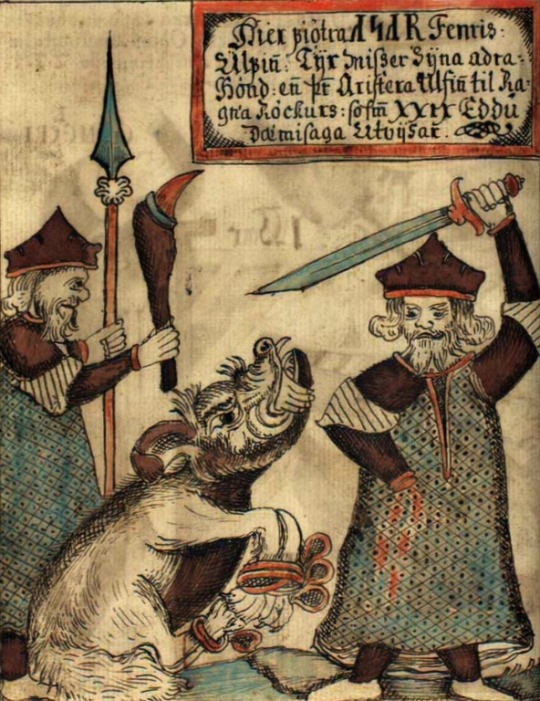
View On WordPress
1 note
·
View note
Text
The German Eastward Expansion
The German Eastward Expansion
Map showing the German Eastward Expansion, starting in the early Middle Ages at the zenith of Charlemagne’s Frankish Empire. Although first German settlements east of the river Elbe in modern Eastern Germany started relatively early, it wasn’t until the 10th and 11th centuries, that larger amounts of Germans moved eastward and assimilated most of the Slavs that had settled there during the…

View On WordPress
0 notes
Text
The Loulan Beauty - A Tarim Mummy
The Loulan Beauty – A Tarim Mummy
By 漫漫长冬 – This file has been extracted from another file, CC BY-SA 4.0, https://commons.wikimedia.org/w/index.php?curid=74597642
One of the Tarim mummies from the Tarim basin in northwestern China in the province of Xinjiang, dated to 1800 BC. These mummies are frequently associated with speakers of the Indo-European Tocharian language which since has gone extinct due to assimilation into the…

View On WordPress
0 notes
Text
Europe ca. 476 CE
Europe ca. 476 CE
Picture: Germanic Kingdoms in Europe after the fall of the Western Roman Empire.
Although the Germans were certainly less sophisticated than their contemporary Romans, Greeks, Egyptians or even the neighbouring Celts, which to the Mediterranean world were already considered barbarians, they were to some degree responsible for the fall of the Western Roman Empire. The Kingdoms which they built…

View On WordPress
0 notes